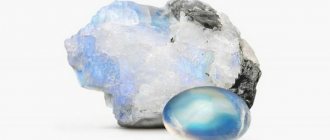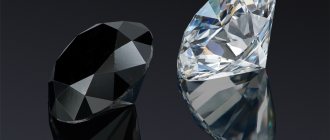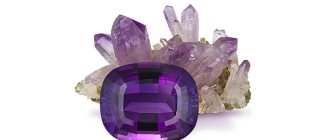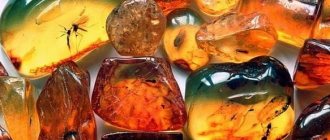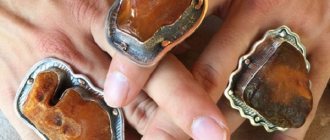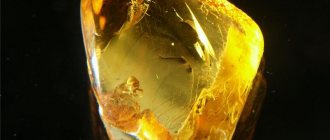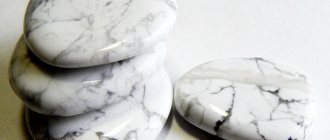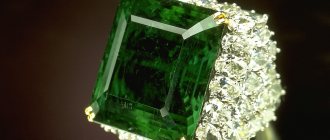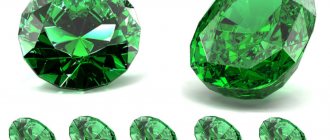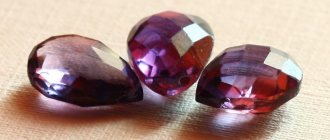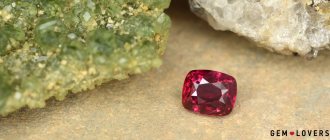The dream of collectors and jewelry connoisseurs is tanzanite. It was named after the area where it was first discovered. A previously unknown mineral was recently found in Tanzania, which practically created a sensation. The gem evokes delight with its shades, shimmering with blue and purple tones. Because of its beauty and similar qualities, it is credited with the magical ability to attract luck, love, and wealth. The gem has found application in two areas: jewelry making and collecting.
Origin and description of the stone
The discovery of tanzanite dates back to March 1966. The event took place on the Merelani plateau, which is located near Kilimanjaro. The deposit was found by prospector Manuel de Souzi, who supplies precious stones. He was assisted by representatives of the Masai tribe, who acted as guides.
According to another version, fires started on the mountain slopes in Tanzania due to drought. They raged for several days. And when they ended, a certain local settler Ali Juyavatu began to look for pasture for his livestock. At the same time, he saw a scattering of very beautiful crystals lying in a scorched area. The shepherd was friends with Manuel de Souzi, an expert on local stones.
The finds were considered sapphires of unusual color, but in 1967 they were identified as a new mineral.
The initiative for the name belonged to the American jewelry company. Volcanic processes or even the circumstances of the collision of continents led to the appearance of such formations. Inconspicuous brown crystals are unexpectedly discovered in placers under the grass. But their largest deposits are hidden in the depths of Kilimanjaro.
Its physical and chemical properties will help you understand what tanzanite is. Description includes composition:
- It is a silicate of calcium and aluminum, which contains vanadium and chromium. Impurities in small quantities determine the color.
- The “cat’s eye” color effect is a consequence of the presence of ilmenite and graphite.
- Chrome adds greenery to the scheme.
The ability to change shades in a particular lighting or viewing angle is interesting. This quality is called pleoxpoism.
Tanzanite crystal
Tanzanite is a stone that exhibits properties similar to glass. Fragility and transparency create processing difficulties. The sample can break into small pieces with any careless movement by the jeweler. Its hardness on the Mohs scale is no more than 7 units. The crystal splits into plates in only one direction, which requires skill.
The mineral in question was used in a pendant called "Heart of the Ocean" from the movie Titanic.
This amazing tanzanite
Due to the unique geological structure, the territory of modern Tanzania contains numerous deposits of various jewelry and ornamental stones. But one of the most interesting is the Merelani deposit (located in the province of Arusha, 60 km southwest of Kilimanjaro), where one of the most interesting and beautiful jewelry stones, blue-violet tanzanite, was discovered in the last century.
In October 2009, Gemological employees took part in the 31st International Gemological Conference (Arusha, Tanzania). As part of the conference, visits (field trips) to various deposits of jewelry stones in Tanzania were organized, where we had the opportunity to see unique samples with our own eyes, go down into the mines, and discuss with colleagues and specialists the current state and prospects of the deposits. And one of the most vivid impressions was visiting the Merelani tanzanite deposit.
View of Kilimanjaro from a tanzanite mine
History of the discovery of tanzanite
Tanzanite was discovered in the summer of 1967 by Portuguese prospector Manuel De Souzo, who sent an expedition to Tanzania to search for rubies. As guides and assistants, he was accompanied by a detachment of local residents - Masai hunters (the Masai are the largest tribe of indigenous people inhabiting the territory of Tanzania).
Young Masai Warrior
Several weeks passed in fruitless searches, when at the foot of Kilimanjaro, in the province of Arusha on the Merelani plateau, the trip was crowned with success. Large, transparent, violet-purple crystals, which were initially mistaken for sapphires, were discovered in cracks that were greatly altered due to the effects of high temperatures and rock pressure. But the stone turned out to be too soft for sapphire.
The examination showed that the new stone is a variety of the fairly widespread mineral zoisite, and the attractive blue color is due to the admixture of chromium and vanadium ions. Zoisite has been known since 1805 and was not used in jewelry.
Crystals of tanzanite (blue - 4.50 and 56.30 carats) and zoisite (brown - 4.40 carats), Merelani Hill deposit, Tanzania. Collection of the Gemological Center of Moscow State University
The tanzanite gemstone would have remained unknown if it had not caught the eye of the vice-president of the Tiffany jewelry house, Henry Platt, who appreciated its unique beauty. Actually, it was Tiffany who made a real star out of a nondescript ornamental mineral.
The most famous cut tanzanite to date, weighing 122.7 carats, is kept in the Smithsonian Institution. It is interesting to note that the National Museum of one of the East African countries houses a cut tanzanite with exactly the same weight.
Faceted tanzanite crystals (0.65 carat trillion, 1.30 carat emerald cut). Collection of the Gemological Center of Moscow State University
Properties of tanzanite
The color of tanzanite is varied - sapphire blue, violet, greenish blue, yellow-green, brown, sometimes colorless and light pink varieties are also found. One of the main features of this mineral is strong pleochroism (an optical property that causes the change of different colors in one stone depending on its orientation when viewed). When viewed from different angles, tanzanite exhibits blue, purple (to red), green (or brown) colors.
Trichroism of tanzanite. When viewed from different angles, tanzanite exhibits different colors: yellow-brown, blue-violet, violet-red. TanzaniteOne Collection, Merelani Hill, Tanzania
Some crystals exhibit an alexandrite effect: in daylight they are blue in color, and in artificial light they are violet. Tanzanites with a cat's eye effect are also found.
Currently, tanzanite is widely used in the jewelry industry, since a good quality cut stone is not inferior in color density to sapphire. It can be easily distinguished from sapphire by its physical properties (see table). Tanzanite is characterized by inclusions of graphite, ilmenite and gas-liquid inclusions.
When cutting tanzanite, they try to enhance the blue color, so they cut it in such a way that the direction along which the stone appears blue is perpendicular to the site.
Diagnostic properties of tanzanite
| Property | Meaning |
| Optical character | Optically anisotropic, 2+ |
| Refractive index | ng=1.697-1.725, nm=1.688-1.700, np=1.685-1.705 |
| Birefringence | 0.009 |
| Pleochroism | Strong trichroism: purple, blue, brown or yellow |
| Dispersion | 0.030 (BG), 0.011 (CF) |
| Density, g/cm3 | 3.35 |
| Cleavage | Perfect (one direction) |
| Hardness (Mohs scale) | 6.5-7 |
| Inclusions | Characteristic inclusions of graphite |
| Fluorescence | Absent |
Current state of tanzanite mining
Until the 90s of the last century, tanzanite mining was carried out mainly by private miners. In 1990, the Tanzanian government decided to streamline the development of the field. The territory of the field was divided into four areas - blocks A, B, C and D, with subsequent licensing of mining companies.
The Tanzania Ministry of Energy, Water and Mineral Resources is responsible for issuing mining permits. Blocks A and B, located in inaccessible mountainous terrain, as well as block D, where the ore-bearing layers are covered by thick layers of soil and waste rock, which significantly complicate mining, were intended for development by local mining companies. The territory of block C is the most convenient in terms of development, was intended for development by foreign mining companies and is currently the main source of tanzanite.
Tanzanite crystals. TanzaniteOne Collection, Merelani Hill, Tanzania
Mining work in Block C began in 1995 by Graphtan Ltd. (Great Britain), from 1999 to 2004, the deposit was developed by African Gem Resources Ltd. (South Africa) and from 2004 to the present, tanzanite mining has been carried out by the company Tanzanite One Group (Tanzania) (today it controls from 50 to 60% of the explored reserves of tanzanite).
The tanzanite mine, developed by Tanzanite One, is the largest active mine in Tanzania. The main mining is carried out underground (the length of some mines reaches 400 m and the depth is about 300 m below the surface of the earth). In some areas, the tanzanite content in 1 ton of ore can reach 60 carats.
In 2009, the company plans to extract about 1.7 million carats of tanzanite (for comparison, this figure in 2006 was 1.2 million carats, and in 2005 – 1.4 million carats).
Tanzanite ore processing plant, Merelani Hill mine, Tanzania
Gemological evaluation of faceted tanzanite
The gemological evaluation system for faceted tanzanites is based on the 4C principle, i.e. The cost of tanzanite is influenced by the color group (Color), clarity group (Clarity), carat weight (Carat) and cut (Cut).
The color group - one of the most important characteristics of tanzanite - characterizes the color and the degree of its saturation.
To describe color saturation, 6 gradations are used: Exceptional (exceptional), Vivid (bright), Intense (intense), Moderate (moderate), Light (light) and Pale (pale-colored).
By color, tanzanites are divided into a number of groups ranging from blue-violet (the main color is violet) to violet-blue (the main color is blue).
Samples for gemological evaluation of the color of faceted tanzanites
The purity grade depends on the presence, size and number of inclusions in tanzanite. There are 4 groups based on purity: EC (Eye Clean - defect-free), SI (Slightly Included - with minor inclusions), MI (Moderately Included - with small inclusions) and HI (Heavily Included - with large inclusions).
When judging a tanzanite cut, angles and proportions are taken into account, as well as the degree of light return (brilliance) from the stone. The highest grade of Excellent (excellent) is assigned to a stone for its cut if its cut parameters provide maximum brilliance.
To measure the mass of cut tanzanites, a metric carat is used (1 carat = 0.2 grams) and the mass value is indicated to the second decimal place (hundredths of a carat).
Ennoblement
The color of the majority (about 95%) of mined tanzanites is an unattractive yellow-brown. A special heating (annealing) process up to 400-650°C leads to a reduction in unwanted shades in the color of the stone and the appearance of beautiful shades of blue and purple in the stone. This color change occurs when the stone is annealed for one hour at a temperature of 375°C, or in just a couple of minutes when annealed at a temperature of 600°C. Further heating leads to discoloration of the crystals.
Sometimes, to change or enhance the color of tanzanite, processes of applying various film coatings to the surface of the stone are used.
It is quite difficult to distinguish refined tanzanite from untreated ones. To solve such a problem, it is necessary to use special gemological laboratory equipment.
About prices
Thanks to the fact that the Tiffany company got involved in the marketing of tanzanite in the early stages of developing the only deposit in the world, this stone quickly gained recognition in the American market. In the 90s of the last century, tanzanite became a fashionable stone known to the general public. The stones spread all over the world, including Russia. Prices for tanzanites could not exceed the prices for sapphires, but at the end of the last century and at the beginning of this century, the cost of high-quality stones usually exceeded a thousand dollars per carat. These prices lasted until the start of the global economic crisis in 2008. Today, the cost of zoisite raw materials for cutting tanzanite is about $200 per gram (with a raw material crystal weight of about 1 gram), and cut tanzanites in Tanzania itself are sold for $400 per carat (one-carat stones). Interestingly, about 95% of the mined zoisite is brown in color, and 5% is tanzanite, which has a natural color. But large companies like Tanzanite One sell the raw material at the same price, regardless of whether it is purple or brown. The annealing of zoisite is carried out by the buyers themselves - sightholders of the Tanzanite One company - mainly Indian companies.
Modern research on tanzanite
Tanzanite, thanks to its unique color characteristics, is a very interesting stone not only from a jewelry, but also from a scientific and practical point of view. The Gemological Center of Moscow State University conducts research on the color of tanzanite using modern spectroscopic methods and computer modeling methods. Such studies make it possible to predict and simulate the color of tanzanite after heating, compare it with the original color, and select the optimal parameters and cut shape to maximize the beauty of the stone.
Photorealistic images of tanzanite that has been annealed to change color and zoisite that served as the raw material for refining
Maxim Viktorov, Gemological Yuri Shelementyev, Gemological Center of Moscow State University Roman Serov, Gemological Center of Moscow State University Valeria Pustovoitov, Gemological
*The article was published in the magazine “Jewelry Review”, January 2010
Field
Tanzanite is considered a precious stone. Industrial scale of production began at the end of the last century. Local developers (Tanzania) manage only 60%, the rest belongs to companies from the UK and South Africa. The largest deposit is Merelani with a production volume of up to a million carats.
Located in northern Tanzania in the Arusha province, it is also the only place where the gem is mined. Geologists do not assume that the natural conditions that gave rise to tanzanite exist anywhere else on the planet. This fact is one of the reasons for the high cost of stones. According to forecasts, reserves will soon be exhausted.
There is no such mineral as tonsillite stone, the correct name comes from the name of the country: tanzanite.
The mineral is found in the form of crystalline growths or veins. Development is mainly carried out in mines with a depth of 300 m. The deposit is divided by the Tanzanian government into 4 zones, designated by the letters A, B, C and D.
Block C is considered the most promising; up to 60 carats are mined here for every ton of ore. Natural blue crystals hide in crevices, growing on the rock. Their underground mining is carried out in a narrow area about 5 km long.
The Mererani Hills plateau covers only 5 square miles in area. Kilimanjaro International Airport is located over a larger area. This fact shows how limited the deposits of rare stone are. The local government severely limited the number of mines and production. A license is issued only after receiving a quota. Its cost, together with the mine lease, is approximately $40 million. All mines have been nationalized since 1971.
Two-tone tanzanite
Characteristics of the mineral, color features
Tanzanite is transparent and has a glassy luster. The characteristic of the most commonly found nuggets is their brown color. Or it initially appears as yellow-brown crystals. Finds acquire jewelry value after annealing. When heated, the color changes to bright blue, and remains that way. A temperature of 400 or 650 °C destroys excess inclusions. The sample takes on deep sapphire tones or may become discolored.
Red-brown specimens are rare and do not respond to heat. There are purple crystals.
Tanzanite is a mineral whose structural features determine its ability to cause iridescence in the form of an unusual range of colors.
The rich palette combines shades that change when the edges are rotated. The main color is determined by the concentration of impurity compounds contained in the crystal. There are two main groups, one of which is dominated by blue, and the other by violet.
The variety is not limited to a couple of colors. There are large green specimens. Rarely come across small lavender, pink, transparent samples. Natural or natural tanzanite often combines colors.
Of particular value to jewelers are blue nuggets that have acquired color as a result of exposure to lava or the sun. Such a sample is located in the rock close to the surface.
Tanzanite stone: magical and healing properties
The red-brown pattern called the “cat's eye” is most suitable for meditation. Watching the crystal shimmer for a long time has a calming effect. Does tanzanite exhibit magical properties? Magical qualities are more often associated with the well-being of the family. Pendants around women's necks bring harmony to relationships. For girls, the stone attracts the attention of the opposite sex.
Precious tanzanite
Its invaluable value in strengthening marriage compensates for its natural fragility. Precious crystals protect marriage and, when used as part of jewelry, are a wonderful gift for a family anniversary. And:
- a good family man will also receive financial well-being in the absence of laziness;
- the stone favors honest people;
- awakens creativity;
- gives strength;
- he is credited with discovering the gift of intuitive foresight;
- the owner will gain balance, will be surrounded by calm, the number of quarrels will decrease, intrigues will go away.
Tanzanite is favorable for those who are suitable for the process of combining two possibilities: fulfillment and pleasure. For example, a person has not yet chosen a type of activity. The mineral focuses attention on the brightest opportunities, helps to make a profit, and use your qualities to benefit.
Both an uncut crystal and a finished piece of jewelry are suitable as a talisman.
Tanzanite exhibits properties used for healing. Used to treat the following ailments:
- pain in the joints;
- cold;
- sleep disorder;
- Blue shades improve vision and soothe the eyes.
The stone helps fight migraines and headaches. To be effective, you need to hold it in your hands. Earrings with a gem also help. Wearing jewelry makes your skin healthier.
For disorders of the nervous system, brown shades of crystals are recommended. A person gains self-confidence.
How to distinguish a real stone from a fake
The demand for fine tanzanite is very high. Not surprisingly, it is sometimes counterfeited. For example, a tanzanite plate is glued between blue glasses. Without a frame, this is easily detected, but in the composition of the jewelry, it can be difficult to notice fraud. Instead of a rare stone, colorless spinel glued to a blue base is often offered.
Synthetic sapphire as a substitute is slightly more expensive. In order not to purchase a fake, you need to choose jewelry from jewelers with a good reputation.
It is recommended that the sample be carefully and comprehensively examined under light. A natural specimen will change color. It shifts from deep purple to vibrant blue with genuine impact. You should also be wary of how much the jewelry costs; cheapness is inappropriate in this case.
Dark Blue Tanzanite
What is the value of tanzanite stone
Several factors are involved in determining the value of a gemstone: cut, degree of transparency, size. Natural blue specimens are more valuable. Shades obtained as a result of heat treatment reduce the cost. The cat's eye effect is very expensive.
The value of tanzanite is comparable to sapphires and diamonds: $200 - $1000 per 1 carat with a starting price of $120.
The cost is also influenced by the fact that the reserves of the gem may actually run out in 20 years, and other deposits have not yet been found. It is possible that the price will increase.
The magical properties of tanzanite
It is believed that tanzanite was found for a reason almost at the turn of the century and during the transition from one era to another. He acts as a spiritual guide. If you constantly wear jewelry with tanzanite, it helps to activate the hidden abilities of the body, allows you to understand the meaning of life and answer questions that have long worried all of humanity.
Also, there is an opinion that this stone can bring comfort and mutual understanding to the family. If one of the spouses is not sincere in his feelings, then his career will quickly decline, and unpleasant little things will happen to him constantly. Moreover, until he changes his attitude, the quantity and quality of unpleasant “surprises” will grow exponentially.
Advertising - Continued below
Which zodiac sign is tanzanite stone suitable as a talisman?
Blue tanzanite stone, which includes shades of ultramarine, belongs to the water element. Therefore, jewelry will always help Pisces, Scorpios and Cancers in business and relationships.
Talismans will give quick-tempered Aries calmness, prudence, and protect them from misfortunes. The zodiac prescribes the elements of Earth to receive the greatest benefit from brown crystals. They will provide the signs with the energy they need.
The mineral shows a neutral attitude towards all other constellations, as evidenced by the horoscope.
Ring with tanzanite and diamonds
How to care for stone
Tanzanite stone
Although tanzanite has a good hardness on the Mohs scale (6.5-7), among mineralogists it is considered a soft mineral, since it is easily divided into plates and can even crumble from the wrong sudden movement.
The stone is fragile, it must be treated with care, and every owner should know this.
Caring for tanzanite involves following the following rules:
- Jewelry with stones should not be dropped or hit, or subjected to strong friction.
- Such products should be stored separately from other jewelry in a personal case with soft walls.
- Overheating, temperature changes, being in an acidic environment and excessive humidity have a detrimental effect on the stone, that is, you should not take tanzanite with you to a bathhouse or sauna, or wear it while cleaning, washing or doing other housework.
- You should wear jewelry with the “blue beauty” only after makeup and perfume have been applied, in order to avoid accidental contact of these products with the stone.
- Tanzanite is cleaned as rarely as possible, for which it is quickly and “gently”, that is, without the use of aggressive chemicals and abrasives, washed and wiped dry with a suede cloth. For severe stains, it is permissible to use a small amount of baby soap.
What stones does it go with?
It would seem that only diamonds can highlight the beauty of a stone called tanzanite. After all, the gem has the property of self-sufficiency. It's hard to compete with him. But other combinations are also possible.
For example, ruby, topaz or amethyst can make a company. This rarely happens if you need to emphasize the depth of color.
Magicians recommend the following combinations.
- With citrine or amethyst, if a person wants to evoke self-love.
- By combining tanzanite with topaz, the owner can begin to build career well-being, having received enough strength.
- Ruby paired with a purple specimen is suitable for girls. They will have success in work and marriage.
The largest cut tanzanite, “Queen of Kilimanjaro,” weighs more than 200 carats. He adorns a tiara with 912 diamonds.
Tiara Queen of Kilimanjaro
Compatibility with other stones
Tanzanite ring
Tanzanite is a bright externally and energetically strong stone. He doesn't like being around other gems. The only undoubted “friend of the African treasure”, shading the blue and enhancing its power, is the diamond. Jewelers often combine them in jewelry.
In rare cases, tanzanite may be paired with amethyst or citrine - such a tandem will turn the jewelry into a love talisman, as well as with ruby or topaz, which will help you quickly achieve professional heights.
